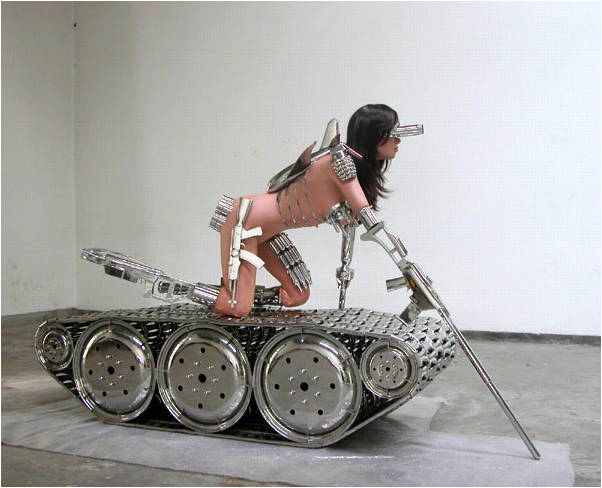PART II | DECEPTIVELY TRADITIONAL: THE ILLUSORY RADICALISM OF FAN XIAOYAN’S CYBORGS
CONCLUSION
In conclusion, Physical Attachment does not succeed as an “experiment in cyborg feminism.” Because it relies so heavily on the sexualized depiction of the female body, all while stripping the figures of any literal or theoretical power, Fan Xiaoyan’s series tacitly reinforces gendered constructs and relationships. In this way, it also problematizes the very concept of the radical cyborg, which has rarely, if ever, been successfully articulated. In fact, the failure of Physical Attachment‘s feminist messaging implies something more about how technological progress has historically reinforced (and continues to reinforce) traditional structures of power and domination. Just as Fan’s cyborg sculptures appear deceptively revolutionary, “information technology often presents itself to us as potentially liberating when in fact our actual interactions with it often reinforce conventional social structures of domination.”[86] This case study in cyborg art illustrates some of the salient issues that obstruct the possibility of a “cyborg feminism” in East Asia, especially the superficial embrace of technology’s liberating potential, evident in the artist’s treatment of the mechanical attachments, as well as the lingering power of the male gaze.
[86] Silvio, “Refiguring the Radical Cyborg,” 55.

